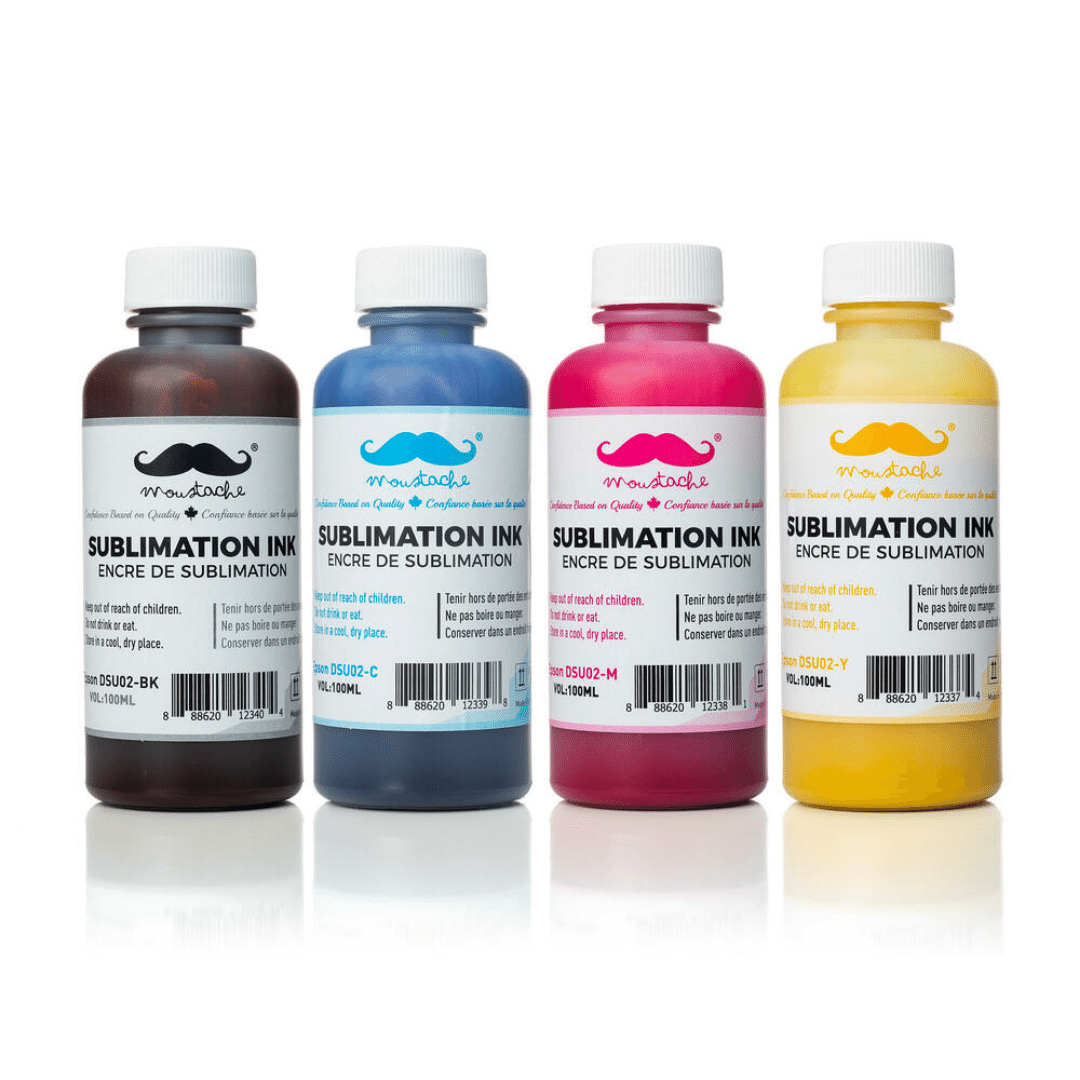
What Is Sublimation Ink
Sublimation ink is a specific ink for sublimating clothes and accessories. The process to achieve sublimation is to print the ink on paper and transfer the result to the printing surface with a heat press. In other words, sublimation is transferring ink on sublimation paper onto a fabric or other material, such as a cup, using a heat press.
What is sublimation ink, paper, and its importance for sublimation ink?
Sublimation is the act of transferring ink from sublimation paper to another surface, but what is sublimation paper? Just as other prints depend on paper, sublimation also depends on special paper, called sublimation or transfer. That is why, despite a good supply of photographic paper and other types, it is correct to say that sublimation ink must be used on special paper so that nothing compromises the final result of your work.
After all, the goals are different. Photo paper is perfect for printing photos, while plain A4 paper is ideal for documents. In this sense, another question arises in the world of sublimation: can I use my inkjet printer to print with sublimation ink?
What type of printer is used for sublimation?
Knowing that sublimation ink depends on sublimation paper, it is natural to think that they also depend on a specific printer, right? Wrong!
This is because there is no such thing as a sublimation printer, but rather an inkjet printer with a bulk ink system.
In other words, you have a home printer to print documents and photos, but you want to give your equipment new functionality. What do you do?
You install bulk ink and start doing countless sublimation jobs with just one ink exchange system. However, it is worth remembering that sublimation inks differ from common printing inks. So, when printing photographs or documents, remember to clean the bulk ink, to avoid clogging.
What to print with sublimation ink?
So far you already know what sublimation ink is, sublimation paper and which printer is used to perform sublimation tasks. I also understand that the use of sublimation ink should not be extended to printing documents and photographs. In this sense, it is possible to print prints with sublimation ink for the following items:
- T-shirts;
- Mugs;
- Bags;
- Name tags;
- Badge lanyards;
- Slippers;
- Among other gifts.
Therefore, quality and a perfect finish are the expected results when printing prints for various applications with sublimation.
Characteristics of sublimation inks
There are two sublimation ink options: with or without technology. In any case, sublimation inks can have the following characteristics:
- Fluid print head;
- Pigments for more intense colors;
- Heavy metal control;
- Wide color profile;
- Color fidelity;
- Managed color palette.
Sublimation ink printed at a good temperature and with good pressure levels will generate good results, highlighting its bright and correct colors.
Advantages of sublimation ink
Now that you know what sublimation ink is and its main applications, I can say that its main advantage is printing various prints with quality. Furthermore, there are other advantages to using sublimation ink in your work. See below:
- Reduces manual tasks – Remember the screen printing technique widely used to print products? Despite some differences, the idea is the same: transferring the paint to a fabric. However, the art of Silk Screen (as screen printing is also known) is much more complex than a sublimated digital print;
- Optimizes time – Sublimation ink also reduces the time you spend completing the task of printing prints for various applications. This way, you will be able to use your time for other activities and increase your production;
- Influences high productivity – There are many things you can do with the art of sublimation, generating greater productivity and income;
- Better resistant to different types of conditions – Due to their high absorption capacity, sublimation inks have the advantage of being more resistant. You can, for example, expose your work printed with sublimation ink to light, friction, or washing without affecting its quality.
How to choose sublimation ink
Choosing sublimation ink is essential to guarantee printing quality and customer satisfaction. This is because it offers vibrant colors and good fluidity and guarantees adhesion to the material used in the transfer, preventing the image from fading or peeling over time.
Above all, the ink must be compatible with the printer and the material used for transfer to ensure efficient sublimation. Therefore, the characteristics that define a high-quality sublimation ink include:
- Vibrant color: it is essential that the ink has bright and vibrant colors so that the printed image has quality and clarity.
- Good fluidity: it must have good fluidity so that it is easy to work with and does not cause blockages or blockages in the printer.
- Quick drying: it must dry quickly to avoid smudges and ensure image quality.
- Good adhesion: it must adhere perfectly to the material, ensuring the image does not fade or peel.
- Durability: essential to ensure that the image remains sharp and vibrant for a long time.
- Compatibility: the ink must be compatible with the printer and the material used for transfer, so the sublimation process is efficient and problem-free.
Final considerations
For each type of printing, there’s a specific ink. This is how the world of impressions works. That’s why you can’t use sublimation ink to print photos or dye ink to do sublimation. In other words, it is impossible to save money with sublimated prints if you expect an exquisite result: sublimated inks have high prices for a 100ml refill.

